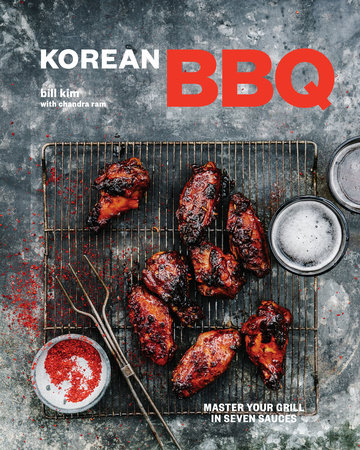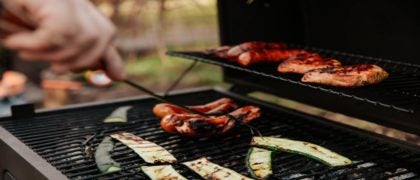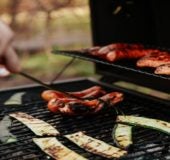Introduction
I became a Korean American on a cold winter day in 1977, when my family landed in Chicago after emigrating from Seoul, South Korea. My parents decided to move us to America because they were worried for my brother and me. They wanted us to have more options and opportunities and thought America would provide them. But I didn’t understand any of that when we arrived in Chicago. I was seven years old, I didn’t speak the language, and I missed my friends in Seoul. In America, I was an alien: no one looked like me. I was miserable, and I just wanted to go back home.
I ditched my first day of school in Chicago. I grabbed my brother, who was six, and a book my Korean friends had filled with messages for me before we left, and we hid all day in the basement of the store where my family worked. Later, we found out the whole school had been looking for us, and I got into a lot of trouble. I had to apologize to the entire class and to the principal. After that, my parents took me to school every day for the rest of the year. They didn’t trust me not to run away again.
I hated school that first year. I didn’t understand what the teachers or other kids said to me, or what I was supposed to say to them. And then there was my name! My Korean name was Bum-Suk (and my brother’s was Yu-Suk). Imagine going to elementary school and trying to fit in and make friends with names like that! All I wanted was a regular American name. That part of my childhood was hard, but I also cherish it in a strange way, because it’s part of who I am today.
There were maybe only two other Asian kids in the whole school. I had to learn everything: currency, directions to the bathroom, even how to say hello. But slowly, it got better, and a year later, when more Korean immigrants came to our school, I was the one helping them get acclimated and guiding them through life in America. I didn’t want them to go through the same trauma I had, and it made me happy to help others avoid it. When you are alone in a new country and then finally see someone who looks like you and understands where you come from, it’s very comforting.
The experience was intense, but it showed me that if I could conquer a new school, a new language, and a new country, I could do anything. I got through it, and learned that the world isn’t so bad, and that I could make it even better for others.
After living briefly with my aunt Janet, my parents rented a store and our family lived in the back, in one big room. We slept on mattresses on the floor and cooked on a hot plate; it wasn’t too different from how we lived in Korea. We didn’t feel bad for ourselves; it was just what we had, and we were perfectly fine with it. I earned extra money by picking up glass bottles to turn in for the nickel deposits.
I had some responsibilities as the oldest of five kids in the household (which included my three cousins), some of which were about food.
When we cooked and ate at home, our food was Korean with a lot of American touches. I had done a little bit of cooking before we left Seoul, including cooking my first cup of instant ramen over
seogtan (burning coals) when I was just six. (Yes, my mom let me cook it without anybody helping me. Just remembering how dangerous that was makes me laugh. A little crazy, huh?)
My first kitchen duty in America was roasting sesame seeds and grinding them with a mortar and pestle for my mother’s kimchi. Another of my jobs was carefully waving sheets of dried seaweed over an open gas flame to toast them for our snack. (Sometimes I’d put them in our toaster.) Also, every afternoon after school, I had to wash the rice, let it soak, and remember to press the button on the rice cooker so the rice would be ready when my parents got home.
But making our after-school snack was my real specialty. The fridge was loaded with honey ham, roast beef, bologna, and American cheese slices. Coming from Korea, where we didn’t eat sandwiches aside from the rare luxury of a butter and sugar sandwich, having so many choices was heaven and meant that I could make sandwiches with all of the meats. I still make them today; at our restaurants we call it “phat style.” I also had an infatuation with hot dogs: I ate them with rice, nori, buns, English muffins, anything, as long as there was tons of ketchup, and I still can’t eat a hot dog without ketchup. (In Chicago, people go crazy if you eat hot dogs with ketchup, so I pretend the ketchup is for the fries but use it for the hot dogs. But keep that quiet!) I didn’t know it then, but those early days of caring for my family with food was when I began the process of becoming a chef.
But my best food memories are from when we would get together with other Korean families to barbecue in the park. We were doing the most American thing, setting up grills, playing games, chasing one another, and cooking food, but our food was Korean. We were acclimating, but slowly.
As we settled into life in Chicago, we moved around the city a bit, each time learning about other cultures from our neighbors. We lived between an Indian neighborhood and a Jewish neighborhood, in an area where a lot of immigrants had landed. There were people there from all over the world, but we accepted one another. Then we moved to an Italian neighborhood. I remember the neighbors thought we were crazy when my mom strung fish on the clothesline attached to the pear tree in the front yard to dry them, right next to our clothes. To fertilize the garden, she buried fish heads in the soil—they had to be buried deeply to keep the flies away— and put crushed eggshells on top. Mom loved her garden; she grew sesame leaves (also known as perilla), Korean chilies, and little Kirby cucumbers to make kimchi.
I had a great time living in that house. My best friend, Tony Bruno, lived nearby, and we’d go to his house after school. Tony’s family was as Italian as mine was Korean, but there were some similarities. Neither of our mothers spoke English, so we both understood what it was like to be the kid who had to translate conversations for his mom. Tony’s family had a garden like ours, but they grew tomatoes. Instead of drying fish on a clothesline, they would dry, salt, and cure their tomatoes in wicker baskets under the sun. They even made their own wine (which, of course, Tony and I tried a few times). Looking back, I realize that Tony’s life was like mine, just based in a different culture. It might have been fish drying out back at my house and tomatoes drying at his house, but we were both immigrant kids trying to figure out how to fit in and what it meant to be an American.
I got used to life in Chicago but I never really felt like I fully assimilated, especially at school, which wasn’t for me; I was a very average student. In my junior year, school became a scary place for me, because that was when a lot of my friends picked the college they wanted to attend. Where was I going to get in? What would I major in? How was my family going to afford college? I had no idea. I went to the college night at the local junior college and saw the banners for all of the Ivy League schools—Harvard, Yale, Princeton, and Brown. I was about to walk out when I saw a giant white-and-blue wedding cake in the middle of the room, topped with a man in a blue tuxedo next to a bride. At first, I thought it was weird that someone was getting married at a college, but as I approached the cake, a representative from a culinary school asked me if I was interested in cooking. That was when I realized the cake was decorated to match the logo of the school.
A school for cooking? Was this for real? I had a million questions. What did I have to do to get in? What did my GPA need to be? How much did it cost? Even with all of these questions, I was relieved that I had found a path I wanted to walk. And I only found it after noticing that wedding cake. If I hadn’t seen it, I don’t know if I would be cooking today.
When I told my parents I wanted to attend culinary school, they were very supportive, but at the same time had no clue what that meant. I think they were just glad that I was going to get a degree in something. I decided to first enroll in the culinary training program at the local junior college, to save money and to stay close to home. No one I knew went to cooking school, so I was scared about wasting money, and this was an easy way to make sure a career in cooking was right for me. But once I started my classes, I knew I had found my calling. I went to class and inhaled the smell of paprika, and of onions caramelizing in a pan. Those smells, the chaos of the day, tasting all of the food—it was a dream come true. Don’t get me wrong; it was hard work. But I knew this was something I could make a career out of while following my passion for food.
Copyright © 2018 by Bill Kim with Chandra Ram. All rights reserved. No part of this excerpt may be reproduced or reprinted without permission in writing from the publisher.






